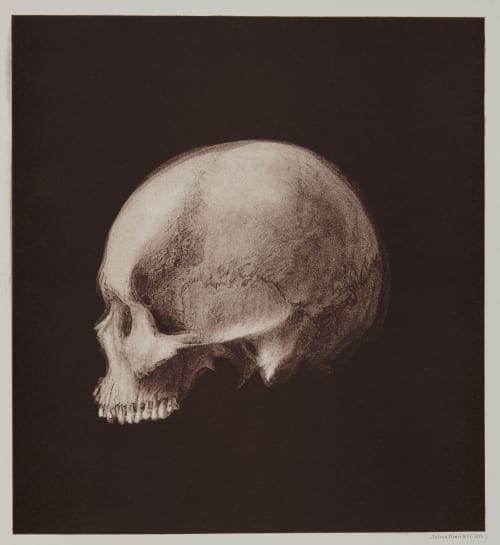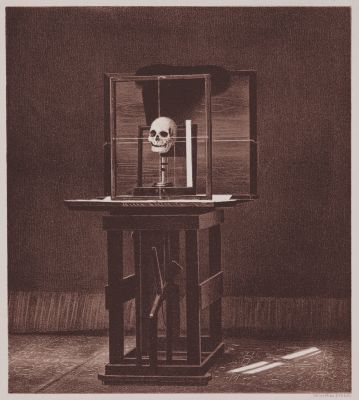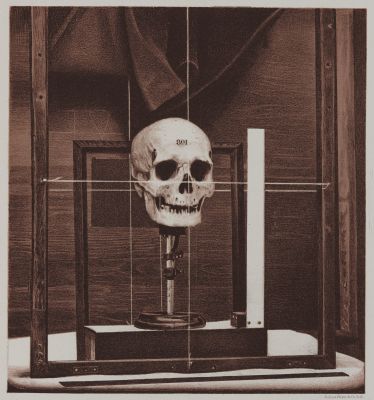
Title
Arrangement for Taking Composite Photographs of Skulls, Photograph No. 1Artist
Bien, Julius (American, 1826-1909)Publication
Memoirs of the National Academy of Sciences, volume III part 2Date
1886Process
PhotolithographAtelier
Julius Bien, New YorkImage Size
16.6 x 15.2 cm
Beginning in 1868, the United States Army Medical Museum issued a request to Army medical personnel situated in ‘Indian country’ for specimens of skulls from Native Americans. The purpose of this collection was to promote the study of craniometry, a branch of racial science commonly used to delineate the different varieties of mankind and to rank them according to their perceived intellectual attributes. Author John Shaw Billings (1838–1913) was an American librarian and surgeon, best known as The modernizer of the Library of the Surgeon General’s Office of the Army and as the first director of the New York Public Library
The photographs by Washington Matthews (1843–1905) show 24 photo-transfer chromolithographs of skulls, a craniophore, and procedures in craniometry. The richly colored plates were produced by the gifted German immigrant lithographer, Julius Bien, whose reissue of Audubon’s aquatints are prized by collectors. To reproduce Matthews’s photographs, he screened the negatives onto photo-transfer paper, serving to transfer the images to limestone blocks. After they were burned in the blocks, the images were then extensively retouched by litho crayon. Bien’s studio prospered for over 50 Years and he was a founder and first president of the National Lithographers Association.
One of the most startling books. The pseudo-science of craniology and the measurement of skulls to relate differences in mental abilities is unlikely from today’s perspective. But these strange images of the skulls held in a special measuring device and then as multiple superimpositions is particularly surreal. The use of photolithography and printing in rich dark reddish browns also sets this work apart from the average. (Hanson)
References
[1] Hanson, David A. Checklist of Photomechanical Processes and Printing, 1825-1910. , 2017. p. 185








